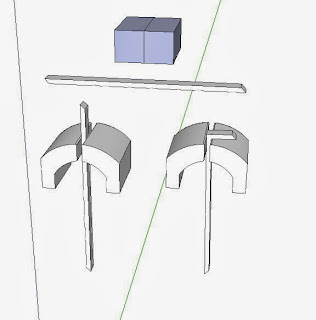I served in the Vietnam era. My span of active service was 1988 - 1997. All of my service was in the continental United States. I was never “in country” in the combat zones. I witnessed a lot of carnage that resulted from the war but I was never shot at outside of some training exercises. I had the opportunity to visit with hundreds of wounded soldiers as I cared for their wounds. It took me over twenty years before I was able to move on and not think about that experience on a nearly daily basis.
I am very favorable to veterans. I thank them for their service and sacrifice whenever I see an opportunity. I donate monthly to the Wounded Warriors Program and I am a member of the American Legion, but I have been to our local meeting place only once in the past twenty some years. I really don’t want to think back on those years. Sure, I’m glad I served, I hope I provided some healing and comfort, but sometimes if is just better to quit looking back.
My father served three years in WWII. One of his colleagues was involved in setting up Radio Free Europe. I have a French “brother” who lost his soldier father just as the war ended. I have a step-brother who was an officer in Naval Intelligence.
As a child I knew an officer who was on the Bataan Death March, a submariner who was rescued from the USS Squalis, and an G2 agent who played a lot of bridge and probably helped disguise the date of D-Day. I knew an airman who was shot down on his first bombing mission in a B-24 over Germany and served time in a stalag. He later wrote a manuscript for a novel, which I read, but he never published it. I feel that essentially my entire life has been lived in the environment of the United States armed forces.
So where does this memory flight land? First, I don’t like reliving painful memories. Second, I appreciate the sacrifice of all veterans who served their country. All gave some, some gave all. Thirdly, I don’t count my non-combat service on the same plane as the combat veterans, but I do acknowledge that it was not trivial.
A couple of months ago I was asked to forge a small “Tip of the Spear” emblem for a SOCOM soldier who was retiring. His fellow servicemen were designing a shadow box retirement gift in which they would place items emblematic of his carer and the spear point would be a featured item. http://www.socom.mil/default.aspx During my active duty years I became acquainted with a number of special operations soldiers. These are very brave and dedicated souls.
As a forging project this was not a big one. The finished piece was just about 4” tall with a traditional black finish. One requirement was that the back must be flat and suitable for engraving of another message. I did a little research and found todays insignia is a slight variation from the original OSS insignia.
I cut a blank from 1” solid square mild steel about 4.5 “ long and welded it to a porter bar. With coal fire heat I forged a short tip taper then draw a flat spear point shape the full length. I made a round taper from 5/8” round tool steel and used it to make a half-round taper swage into which I could drive the blank with a high heat using the hydraulic forging press. This extruded enough mass on each side of the spear to forge the blades. I used a forging hammer on the anvil to fuller the flare of the blades which were then trimmed to shape.
I made another swage in which I formed 3/16” round into the half-round hafting bands. With torch heat I wrapped each band and MIG welded it on the back side.
I felt it turned out pretty well and I sent an image to the client by email. It was approved, I shipped it and got a PayPal payment and that is probably all I will ever know about the project. I don’t know the name of the retiring SOCOM individual or anything about their biography, but I’m thankful for their service and wish them an enjoyable retirement.
 |
| Tip of the spear insignia. |
 |
| Scaled drawing of spear tip. |
 |
| Blank after swaging in hydraulic press. |
 |
| Pattern traced on backside of fullered blades. |
 |
| Half-round hafting bands added. |









































